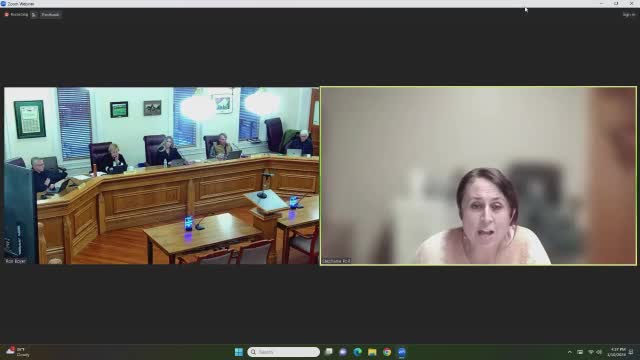Summit County addresses tax exemption dispute for Katie Russell's new home
January 10, 2024 | Summit County Council, Summit County Commission and Boards, Summit County, Utah

This article was created by AI summarizing key points discussed. AI makes mistakes, so for full details and context, please refer to the video of the full meeting. Please report any errors so we can fix them. Report an error »

A significant discussion unfolded during the Summit County Council meeting on January 10, 2024, regarding a property tax exemption request from homeowner Katie Russell. The council examined the complexities surrounding her claim for a primary residential exemption on her newly built home, completed in 2022.
Russell, who moved into her home in February 2021, believed she had applied for the primary residence status but later discovered she was still being taxed as a non-primary resident for 2022. During the meeting, she explained that she had received a tax form indicating she was eligible for the primary exemption, leading her to assume her taxes were correctly assessed. However, it was revealed that the exemption application was not filed until 2023, missing the November 30 deadline for the previous year.
Council members questioned the tax assessment process, particularly the classification of a swimming pool on the property as a primary improvement, despite the house itself being categorized as non-primary. This discrepancy raised concerns about the clarity of tax notices sent to Russell, which were mailed to her previous address in Salt Lake City, complicating her ability to respond in a timely manner.
The council acknowledged the confusion surrounding the tax notices and the potential for miscommunication. Russell's case highlights the challenges homeowners face in navigating property tax regulations, especially when multiple classifications exist on a single property. The council's deliberations underscored the importance of clear communication from tax authorities to ensure residents understand their tax obligations and available exemptions.
As the council continues to review the situation, the outcome of Russell's exemption request remains uncertain, but it has sparked a broader conversation about property tax assessments and the need for improved clarity in tax documentation.
Russell, who moved into her home in February 2021, believed she had applied for the primary residence status but later discovered she was still being taxed as a non-primary resident for 2022. During the meeting, she explained that she had received a tax form indicating she was eligible for the primary exemption, leading her to assume her taxes were correctly assessed. However, it was revealed that the exemption application was not filed until 2023, missing the November 30 deadline for the previous year.
Council members questioned the tax assessment process, particularly the classification of a swimming pool on the property as a primary improvement, despite the house itself being categorized as non-primary. This discrepancy raised concerns about the clarity of tax notices sent to Russell, which were mailed to her previous address in Salt Lake City, complicating her ability to respond in a timely manner.
The council acknowledged the confusion surrounding the tax notices and the potential for miscommunication. Russell's case highlights the challenges homeowners face in navigating property tax regulations, especially when multiple classifications exist on a single property. The council's deliberations underscored the importance of clear communication from tax authorities to ensure residents understand their tax obligations and available exemptions.
As the council continues to review the situation, the outcome of Russell's exemption request remains uncertain, but it has sparked a broader conversation about property tax assessments and the need for improved clarity in tax documentation.
View full meeting
This article is based on a recent meeting—watch the full video and explore the complete transcript for deeper insights into the discussion.
View full meeting

